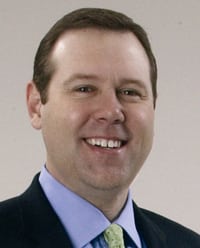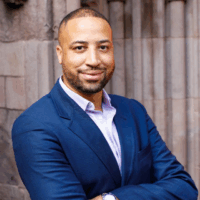Chief Marketer talked with several expert marketers, to get their take on what brands and trends will be hot in 2017, and which were the highlights of 2016.
 JOHN FERNANDEZ, DIRECTOR, ANALYTICS & OPERATIONS, DILIGENT CORP.
JOHN FERNANDEZ, DIRECTOR, ANALYTICS & OPERATIONS, DILIGENT CORP.
What are your biggest marketing concerns for 2017? Creating compelling content. Buyers today are so swamped—e-mails hit every minute, the phone rings a dozen times a day or more, and every website has advertisements all over. How do we stand out?
What will be your biggest marketing investment for 2017? Content. Creating more of it, making the quality better, and telling our stories in as many formats as possible to support our buyer personas along their journey.
What was the biggest marketing story of 2016? The rise of live video. Snapchat, Facebook Live and other formats are showing video content in real-time. The ubiquity of smartphones means that anyone can be a storyteller at any time.
What’s the brand to watch in 2017? Microsoft. Buying LinkedIn for $26.2 billion gives Microsoft and incredible amount of data, and improvements to its products make it an incredibly compelling company in 2017. My prediction: In 2017, Microsoft Dynamics CRM allows for complete integration and conversation with folks on LinkedIn from within CRM, creating a very interesting challenge to Salesforce.
What was your personal favorite campaign of 2016? Whether it’s technically a campaign or not, Uberflip’s Flip the Switch Podcast has been an amazing example of thought leadership.
 JON SPENCELEY, CONTENT & SOCIAL MEDIA MANAGER, VIDYARD
JON SPENCELEY, CONTENT & SOCIAL MEDIA MANAGER, VIDYARD
What are your biggest marketing concerns for 2017? For us, it’s always finding ROI. Every campaign we launch has to have a goal attached to it, and as we share our content between more channels, we’re always looking for opportunities to ensure that every channel is accounted for in our reporting.
What will be your biggest marketing investment for 2017? We’re investing pretty heavily in video for 2017, and not just on the marketing side. Our sales team is creating custom videos for prospects, and I’m bringing more video to our blog posts every month than ever before.
What was the biggest marketing story of 2016? I think the biggest story in 2016 was the meteoric rise of VR and 360 video in consumer technology. These concepts have been around for a long time. I remember seeing the 360 photos demo on Google Glass back when that was a thing but the launch of affordable VR headsets and easy to use 360 cameras has been a real game changer.
What’s the brand to watch in 2017? Interestingly enough, I’m excited to see what John Deere does in 2017. Their Canadian branch just launched an awesome campaign called Down to Dirt that did something really unique and engaging to promote farm equipment for new farmers. I thought it was brilliant, and I’m eager to see what a campaign like this can do with the full weight of John Deere’s brand behind it.
What was your personal favorite campaign of 2016 and why? My absolute favorite campaign was from the Donate Life America charity, and it was called the World’s Biggest Asshole. It’s edgy, hilarious, and promotes a great cause.
PATRICK O’HARA, GLOBAL CHIEF STRATEGY OFFICER, GYRO
What are your biggest marketing concerns for 2017? Too much data, not enough insight. Our research shows us that the volume of data is overwhelming executives and paralyzing business decisions. In the absence of strong insights, the more data we create, the harder it is for business people to make sense of it so that they can make humanly relevant decisions.
What will be B2B marketers’ biggest investment be in 2017? 2017 will see a surge in B2B spending on programmatic and video. Business marketers are learning that programmatic can give them unprecedented reach while maintaining the focused targeting that they require. As a result there will be a boom in high quality B2B video campaigns that were previously unaffordable and inefficient.
What was the biggest marketing story of 2016? Marketing shifts definitively from persuasion (saying) to experience (doing). Business’ hunger for digital transformation in 2017 means marketing will never be the same. According to research we conducted for Hewlett Packard Enterprise, the number one driver of transformation is business’ need to create differentiating customer experiences.
What is the brand to watch in 2017? How are Nate Silver and ESPN going to grow his super-geeky 538 media brand once the election is over? There must be a bigger role for a resource that uses data storytelling and charming infographics to give us points of stability in a chaotic world.
What was your personal favorite campaign in 2016? Small Business Saturday continues to lead the way. It hits the B2B sweet spot: an experiential idea that is built on a brand’s purpose.
A personal favorite is Red Roof Inn’s find a hotel room app. It automatically reserves a room for you near the airport if your flight is cancelled at the last minute. A wonderfully insightful and useful idea that will surely build the brand at the same time.
What are your biggest marketing concerns for 2017? Multi-channel communication and the plethora of new tools have been a gift for marketers, but the deluge of fragmented data which comes with it, and the lack of accessible tools to analyze that data (so often relegated to Fortune 500 companies) means marketers are struggling to draw actionable insights. We hope to see more open and accessible tools come online next year that help marketers parse and extract that data for use in high-tempo testing.
What will be your biggest marketing investment for 2017? Why? We’ll be investing in the customer journey next year in order to raise brand awareness, drive growth and increase customer satisfaction. As this is an area marketing is largely responsible for executing, there’s a growing consensus that marketing is becoming the overall revenue growth architect for businesses. This will include investing in predictive analytics, multitouch attribution analytics, and marketing automation.
What was the biggest marketing story of 2016? The 2016 Rio Olympics was a huge moment in time for marketers, because it represented a missed opportunity. While cable companies have access to powerful technology and audience insights which could give them the power to create timely, personalized viewing experiences, what we got this year was a mass-market, traditional cable watching experience marred by the time delay that killed the element of surprise unless you were completely unplugged.
What’s the brand to watch in 2017? Lyft is one to watch. It has announced exciting updates for consumers including its partnership with JetBlue, offering customers unique discounts and travel perks, and has also been experimenting with new marketing techniques to win more of the Enterprise travel market. They have automated sales and marketing workflow, email and reporting, resulting in 600%+ lead increases in 2016.
What was your personal favorite campaign of 2016 and why? Always #likeagirl wasn’t produced in 2016, but I saw it this year for the first time. A kid will always speak from the heart, and their passionate expressions of what it means to be a girl, vs. what society has taught to think it means to be a girl, is an enduring campaign that cannot be fabricated. Rarely do you see that in commercial marketing.
What are your biggest marketing concerns for 2017? I think my biggest concern every year is that my team and our company is constantly innovating. With today’s rate of technology and ever changing landscape, those who don’t innovate will be left behind. How do we combat that? I think two things I’m always prioritizing is being data driven—in the right ways— and being cost efficient, which are two things ON24 as a company also stand for.
What will be your biggest marketing investment for 2017? I think one of our biggest investments will be around making our marketing efforts as tailored as possible to each vertical and to each account. We want every webinar to be as impactful as it can be, but we also want the data we gather and how we enable sales teams to engage to be powerful as well. How do we do this? Through our data backend, we can find out what things truly resonate with each vertical, and use this to better inform our platform and better serve our customers.
What was the biggest marketing story of 2016? In our space, I think it was the rise of live video. Major social media platforms like Facebook and Twitter caught on early and capitalized on trends of online video consumption. While marketers realize the value of live video, they’re still unsure how to best leverage it to connect with their customers and surpass their goals. I think a big thing we will notice more of in the next year is marketers trying to identify where the most potential is for live video.
What’s the brand to watch in 2017? Geico. I always love Geico’s campaigns, and I think they’re successful because they often have very little to do with insurance. They have very clear messaging, and just about every ad tracks back to that messaging — how simple and easy Geico is, and how much it can save you. And they know how to use humor. They run so many different campaigns that often have very little to do with each other, but because they use humor effectively and communicate simply, their customers feel like they know their brand and message well.
What was your personal favorite campaign of 2016 and why? Going back to Geico, my favorite campaign of 2016 would have to be Geico’s “It’s Not Surprising” campaign. This campaign was another funny way to illustrate how “not surprising” savings were for Geico. Whether it’s Ice T at a lemonade stand or Marco Polo playing Marco Polo in above ground pool, they have the formula down and know that simple, funny messaging is powerful and keeps resonating with consumers.
 MIKE NEUMEIER, PRINCIPAL, ARKETI GROUP
MIKE NEUMEIER, PRINCIPAL, ARKETI GROUP
What are your biggest marketing concerns for 2017? For B2B tech clients multi-channel lead attribution is going to be a hot topic in 2017. As technology has continued to flood into the marketing suite this has created more confusion than clarity. Marketers are rushing to sort through data in an attempt to make intelligent marketing spend decision – and it’s likely just as they figure it out a new tool will pop up to make them re-think everything. Simply put multi-channel lead attribution might be marketing’s next great unicorn.
In addition, during 2017 marketers will be plagued with even more consumer content fatigue. Rooted in increasingly poor content, consumers will continue to tune out. A self-created problem, this is likely to reach new heights in 2017 forcing marketer to reconsider what content is and when it’s too much.
What will be your biggest marketing investment for 2017? People. Good, insightful, creative, engaged people remain the single most important asset in any marketing context, and over time they will continue to demand higher and higher premiums. Premiums smart companies will pay.
What was the biggest marketing story of 2016? Hand down, Trump. The free media vs paid media story is incredibly interesting, and his ability to advance a narrative through sheer force and repetition (a strategy we have dubbed “Trump It”) should remind marketers that about the time you get sick of your own messaging the market is just starting to notice it.
In second place is the Samsung/Apple story. The once, hands down innovation benchmarker Apple rested the corner stone of its iPhone 7 marketing campaign on the fact that one can “brave the elements with the water-resistant iPhone 7”—a secondary feature for most consumers who are not biking in hurricanes. This might have been the beginning of the end. Then Samsung blow up—literally. This gives Apple a much needed do over.
What’s the brand to watch in 2017? Snap Inc. Unlike Google they are likely to make their first wearable—Spectacles—work. Users will not be freaked out by these, in fact the Snap user base is likely to eat them up like cake by the ocean.
What was your personal favorite campaign of 2016? Proving consumers can and will read good, tight copy and that emotions are important Nike landed an ace with its “Greatest Athlete Ever” campaign with Serena. The words, the music, the imagery and the cultural issue— everything came together with precision and creates an impact. Proof good ads are still out there.






